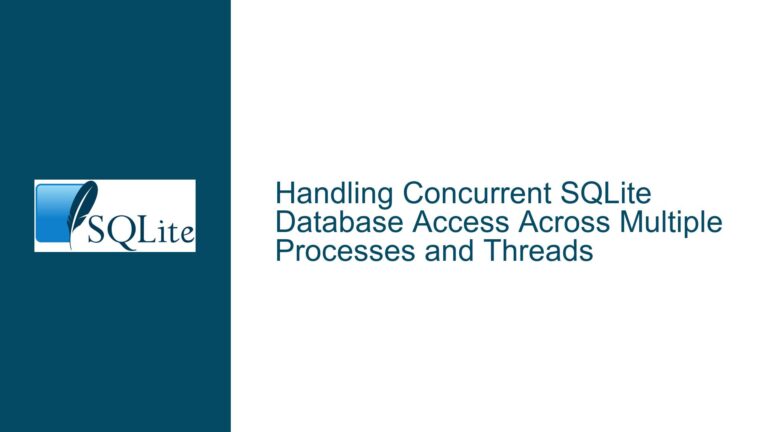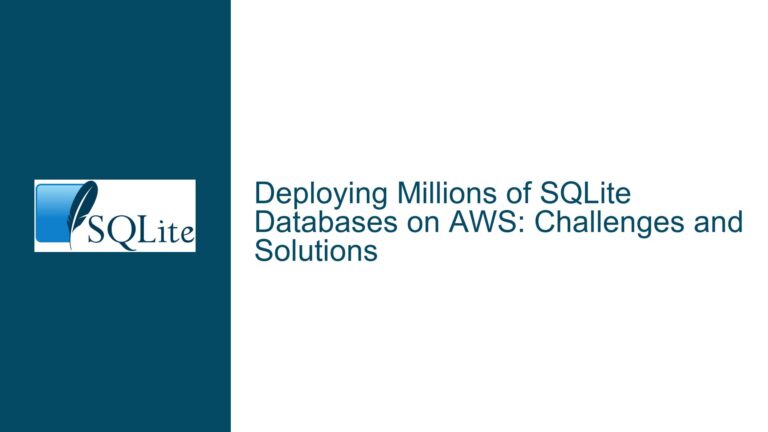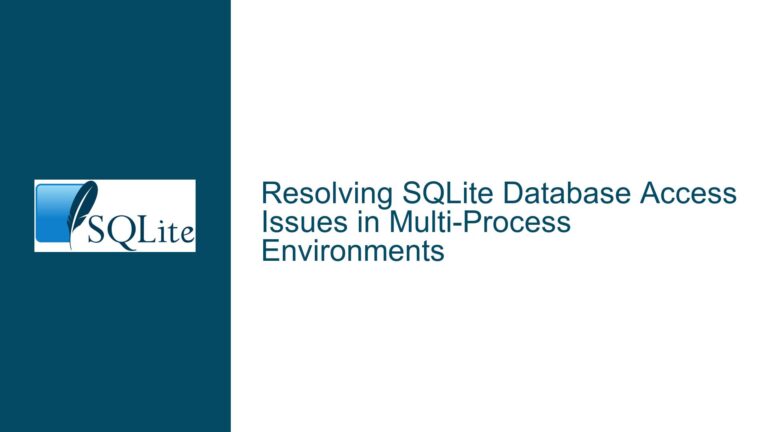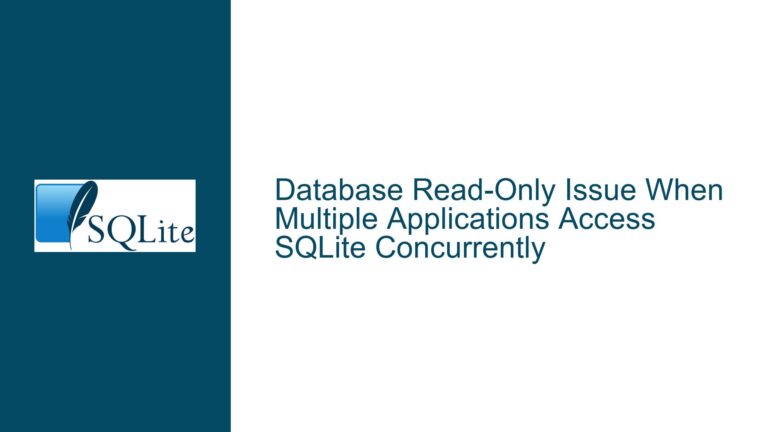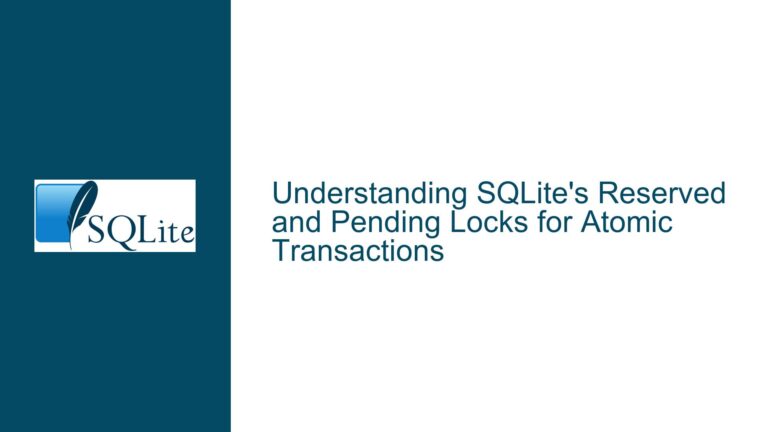Scaling SQLite Databases for Thousands of Users: Challenges and Solutions
SQLite Database Per User in a Social Network Context
In the context of a social network application, the idea of assigning each user their own SQLite database is an intriguing approach. This design choice is driven by the need to isolate user data, simplify data management, and potentially improve performance by reducing contention. Each user’s data is stored in a dedicated SQLite database file, which resides in a unique directory (e.g., /var/www/html/data/{unique_id}). This setup ensures that user-specific data, such as profile information, images, and activity logs, is neatly encapsulated within a single file.
The primary advantage of this approach is the isolation of user data. Since each user’s database is independent, there is no risk of one user’s actions affecting another’s data. This isolation simplifies backup and restore operations, as each database can be handled individually. Additionally, the read-heavy nature of social networks—where user-generated content is read by thousands of others but written to only by the owner—aligns well with SQLite’s strengths. SQLite excels in read-heavy scenarios, especially when the writes are infrequent and well-distributed.
However, this design also introduces challenges, particularly when scaling to thousands of users. While SQLite is highly efficient for single-user or low-concurrency scenarios, it is not inherently designed for high-concurrency, multi-user environments. The primary concern is how to handle concurrent writes and reads across thousands of databases, especially when scaling horizontally across multiple servers. The discussion also raises questions about replication strategies, load balancing, and the potential pitfalls of using SQLite in a distributed environment.
Concurrent Writes and Database Locking Issues
One of the most significant challenges in a multi-user SQLite setup is managing concurrent writes. SQLite uses a file-based locking mechanism to ensure data consistency. When a write operation occurs, the database file is locked, preventing other processes from writing to it simultaneously. While this locking mechanism works well for single-user or low-concurrency scenarios, it can become a bottleneck in high-concurrency environments.
In the context of a social network, where each user has their own database, the write operations are relatively infrequent. However, the reads are highly concurrent, as thousands of users may access a single user’s content simultaneously. This read-heavy workload is generally well-suited to SQLite, as it can handle a large number of concurrent reads without significant performance degradation. However, the occasional write operations can still cause contention, especially if multiple users attempt to write to their respective databases at the same time.
The PRAGMA busy_timeout setting can help mitigate some of these issues by specifying how long SQLite should wait for a lock to be released before returning an error. However, this is not a complete solution, as it only delays the inevitable contention rather than eliminating it. In a high-concurrency environment, even a short delay can lead to performance degradation and a poor user experience.
Another potential issue is the replication of database files across multiple servers. In a horizontally scaled environment, where multiple servers are used to distribute the load, ensuring that each server has an up-to-date copy of the database files is critical. However, SQLite is not designed for network file systems, and using it in such an environment can lead to data corruption due to unreliable file locking mechanisms. This limitation makes it challenging to implement a robust replication strategy without introducing additional complexity.
Implementing PRAGMA journal_mode and Replication Strategies
To address the challenges of concurrent writes and database replication, several strategies can be employed. One of the most effective ways to improve SQLite’s performance in a multi-user environment is to use the Write-Ahead Logging (WAL) mode. WAL mode allows multiple readers to access the database simultaneously while a single writer is active. This significantly reduces contention and improves performance in read-heavy scenarios.
Enabling WAL mode is straightforward and can be done using the PRAGMA journal_mode=WAL; command. In WAL mode, writes are appended to a separate log file, allowing readers to continue accessing the database without being blocked by write operations. This mode is particularly well-suited to the social network use case, where the majority of operations are reads, and writes are infrequent.
However, WAL mode is not a silver bullet. While it improves concurrency, it does not eliminate the need for proper replication and backup strategies. In a horizontally scaled environment, where multiple servers are used to distribute the load, ensuring that each server has an up-to-date copy of the database files is critical. One approach is to use a distributed file system that supports reliable file locking and replication. However, as mentioned earlier, SQLite is not designed for network file systems, and using it in such an environment can lead to data corruption.
An alternative approach is to implement a custom replication strategy that ensures each server has an up-to-date copy of the database files. This can be achieved by using a combination of file synchronization tools and custom scripts to replicate changes across servers. For example, when a user writes to their database, the changes can be immediately propagated to all other servers using a tool like rsync or a custom replication script. While this approach introduces additional complexity, it ensures that each server has a consistent view of the data.
Another consideration is the use of a central database for shared data. While each user has their own SQLite database, there may be some shared data that needs to be accessed by all users. This data can be stored in a central database, such as PostgreSQL or MySQL, which is better suited for high-concurrency, multi-user environments. The central database can be used to store metadata, user authentication information, and other shared data, while the user-specific data remains in their respective SQLite databases.
In conclusion, while using SQLite for a social network application with thousands of users presents several challenges, it is not an insurmountable task. By leveraging SQLite’s strengths, such as its efficiency in read-heavy scenarios, and implementing strategies like WAL mode and custom replication, it is possible to build a scalable and reliable system. However, it is essential to carefully consider the trade-offs and be prepared to adapt the design as the application grows and evolves.

